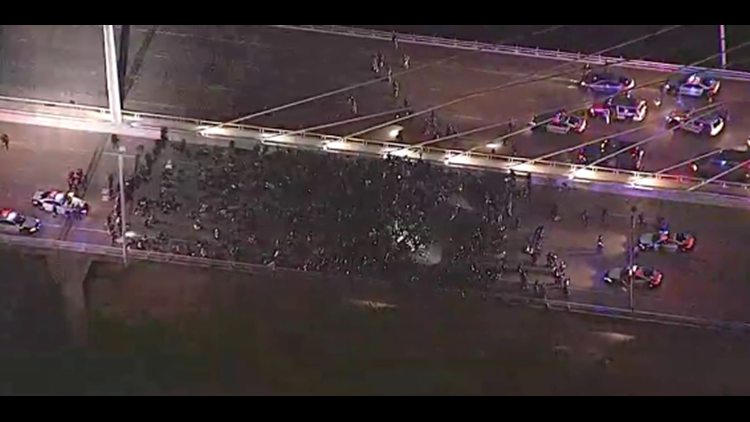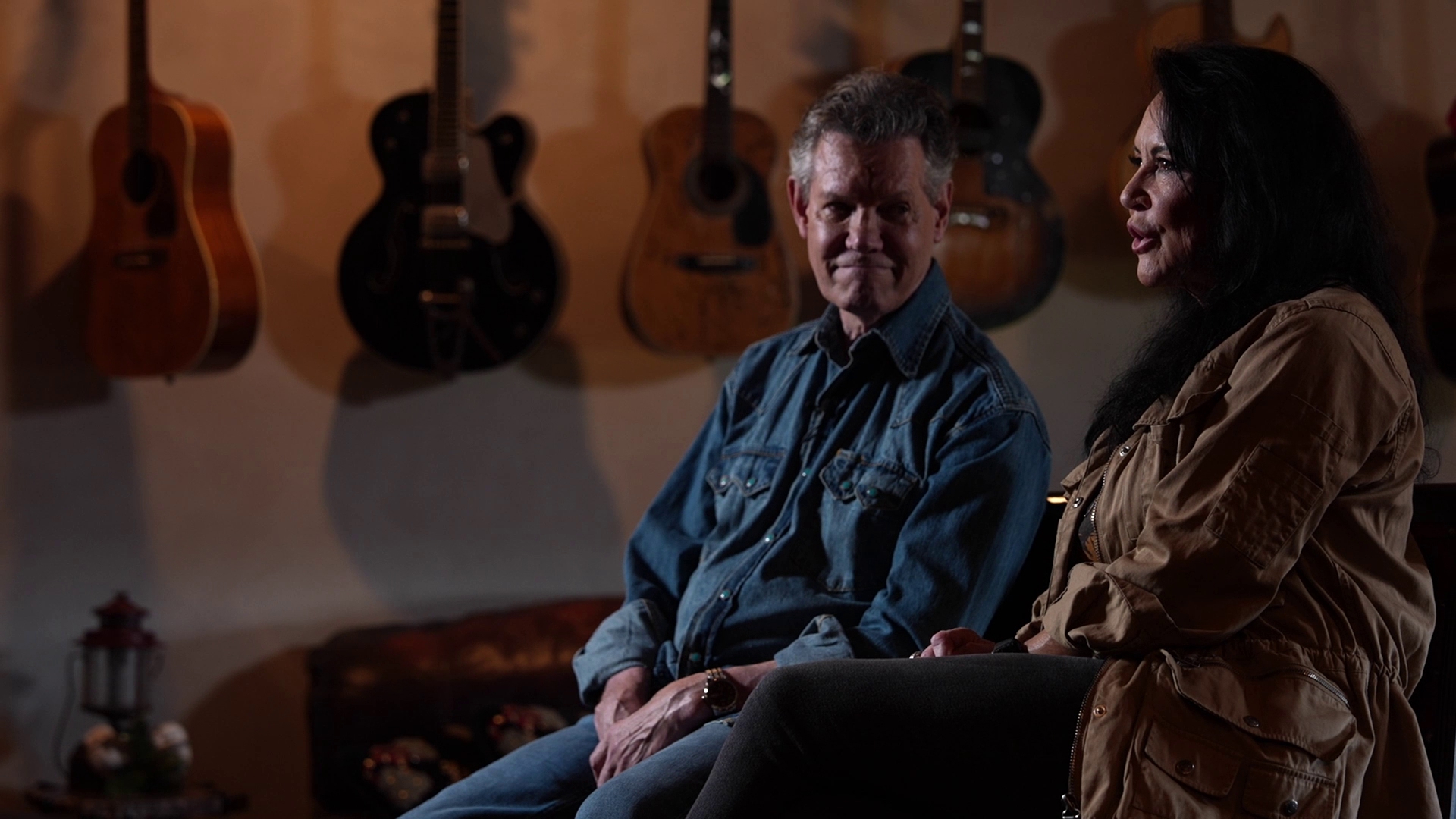DALLAS — A local activist is suing more than a dozen law enforcement agencies two years after she, among others, was injured by police during a peaceful protest at Margaret Hunt Hill Bridge in Dallas.
The civil suit, filed in May, is being put forth by Pamela Grayson, the director of the Collective Activism Social Justice Coordination Center, who is representing herself in the case without a lawyer. There are 20 defendants in the suit, including municipal, state and federal law enforcement agencies such as the Dallas Police Department, as well as departments with Garland, Allen, University Park, and Highland Park. Other defendants listed include the FBI, ATF, the U.S. National Guard, the Dallas County Sheriff’s Office and the City of Dallas.
Dallas protestors gathered on the bridge June 1, 2020, following the death of George Floyd in custody of Minneapolis police officers. Grayson was one of the protestors in attendance, she states in the suit. While there, she states Dallas police officers repeatedly used extreme, lethal force against the crowds, which she described as peaceful and non-threatening. This force included smoke bombs, tear gas, flash-bangs, pepper balls, mace and “kinetic impact projectiles.”
“And without regard to the ongoing global pandemic involving respiratory disease COVID-19, police have teargassed and smoke-bombed protesters, many of whom may have already been infected with COVID-19, making them more likely to suffer simply because they exercised their First Amendment rights,” Grayson writes in the civil suit filing.
Grayson is asking for monetary relief for the injuries she sustained from the actions of law enforcement during the protest, and stating the excessive force violated her First, Fourth and Fourteenth Amendment rights. Dallas police officers included as defendants in the suit, Ryan Mabry and Melvin Williams, as well as Garland police officer Joe Previtt have all been indicted previously for exhibiting excessive force to peaceful protestors during the event.
The scene is described by Grayson as officers waiting at the east end of the bridge during the protest.
“The protestors were met on the east end of the bridge by a line of police officers that were grinning from ear to ear as if they knew they were getting ready to inflict pain on this group of innocent protestors in their angst to disrespect their First Amendment rights to protest,” the suit states.
Grayson states she was preparing to get on the ground as instructed when she was struck by a non-lethal rocket shot in the head, causing her to fall to the ground and giving her a large bloody knot on her forehead. The smoke and tear gas in the air also impeded her ability to breathe, she writes.
After gathering her daughter and walking off the bridge, Grayson states she went to former Dallas Police Chief Renee Hall, who was at a 7-Eleven across the street, who she said blatantly admitted to Grayson that she should never have been shot.
“Chief Hall pretended to not know what members of law enforcement were on the bridge,” the suit states. “Chief Hall pretended to not know that her officers purposely blocked the protestor’s exit off the bridge with the intent of kettling to harm the protestors.”
Grayson is asking for compensatory and punitive damages in the suit to deter this type of conduct in the future, the suit reads.
Since the suit has been filed, seven of the defendants have filed motions to dismiss the suit on various grounds including qualified immunity and failure to specify acts by individual entities being sued.
“In her Petition, Grayson does not specifically allege that the Highland Park PD committed any actions which caused her to suffer an injury or that were substantially motivated against her exercise of constitutionally protected conduct,” Highland Park Police Department’s motion for dismissal reads. “Instead, Grayson just lobs a number of allegations against “Defendants,” collectively.”
A motion for dismissal by the Allen Police Department was filed by Gerald Bright, who also represents the Highland Park Police Department in this case and states similar reasoning.
The City of Garland and the Garland Police Department collectively filed a motion for dismissal against the suit, stating the claim is inadequately pleaded and cannot survive the motion.
“[Grayson] does not identify any specific actions taken by Garland, the Garland PD or any Garland officers that resulted in her alleged injuries,” the motion for dismissal reads. “The lack of allegations regarding any Garland police officers is explained quite simply. The Plaintiff cannot allege that any on-duty Garland police officer violated her Constitutional rights on June 1, 2020 because the Garland police department did not lend any aid or assistance to the City of Dallas or have an on-duty officer on or near the Margaret Hunt Hill Bridge on June 1, 2020. There was no Garland police officer there to allegedly violate the Plaintiff’s Constitutional rights.”
A motion for dismissal filed by the DPS states the Eleventh Amendment bars lawsuits in federal court against a state, or one of its departments or agencies, by anyone other than another state or the federal government, regardless of what relief is requested.



